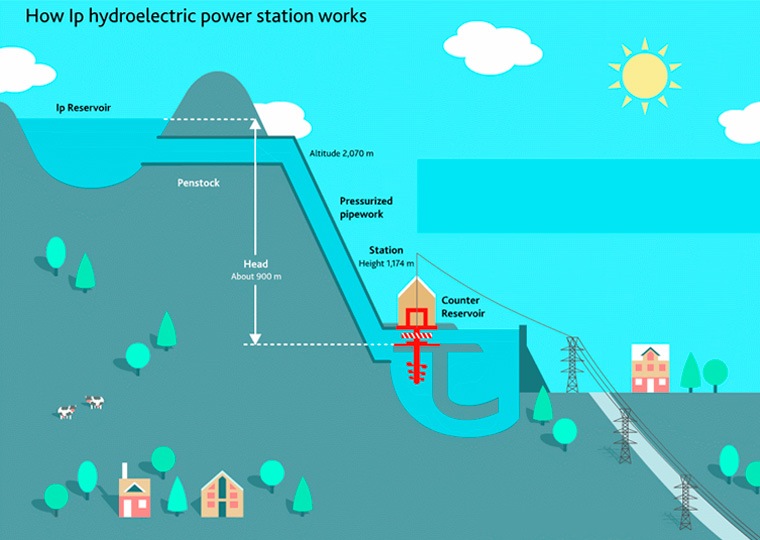-
The hydroelectric pumping station at Ip, built and operated by ACCIONA, stores clean energy in order to free it when needed through a high-pressure gallery and pipework with a head of over 900 meters
-
When October arrives, the inhabitants of the Pyrenees prepare for winter. In picturesque villages you might otherwise find decorating a Christmas card, farmers in this natural border region, between the Iberian Peninsula and continental Europe, store wood in below-zero temperatures, while small animals have already accumulated quite a summer harvest in their burrows to survive the long, cold months ahead without going hungry.
Not far from here, the Ip hydroelectric power station carries this concept of foresighted storage over to the field of renewable energy generation. Nestling 1,174 meters above sea level, by the municipality of Canfranc in the Aragon valley in Huesca province, the facility opened in 1969 and is a good example of energy storage, presently one of the biggest challenges in tackling climate change.
Renewable energy that is not used immediately is normally lost. Wind, sun and water are inexhaustible but short-lived resources, which is why the ability, if possible, to store energy is so necessary. Thanks to the system of pumped storage, ACCIONA is able to respond to this challenge while fully respecting European Union directives that advocate the installation of ‘reversible’ hydro stations whenever possible.
-
-
How does pumped storage work at Ip?
The plant, operated by ACCIONA, is located on the upper course of the Aragon river, fed mainly from Ip lake, sometimes backed up by Iserías lake, which lies at an altitude of 2,215 meters. The torrent of water released from Ip surges downwards from a head of 900 meters, through a high-pressure pipework gallery into the power station turbines, which it turns to generate clean energy.
How does it store renewable energy?
Then, instead of following its course, the water is redirected into a counter-reservoir at the foot of the station and later pumped back up to Ip lake through the same pipework. The water can thus be released again to recommence the cycle and inject more clean energy into the electricity grid.
-
The Ip hydraulic power plant stores clean energy and frees it when necessary
-
-

-
Given the difficulty of accessing the lake area during the snowy season – normally between October and May – data is stored in a remote control facility at the station and also at CECOER (the Renewable Energy Control Center in Navarre, Spain) so that, through a sensor network, it can be brought back online rapidly and effectively when needed. When spring’s first rays of sun begin to defrost the ice and snow, the lake becomes accessible once more. Animals emerge from hibernation to embrace the new season. Shepherds drive their flocks across the green pastures unconcerned by any notion of cold. Ip hydro, however, continues to store its renewable energy, ready to release it when required in a perpetuating cycle that successfully overcomes one of the great challenges of the present day: how to store and generate clean electricity. If you would like to read more stories like this one, visit the website of ACCIONA.





